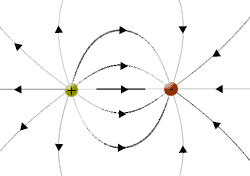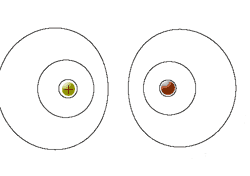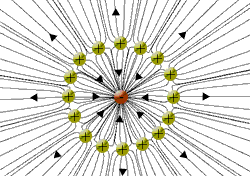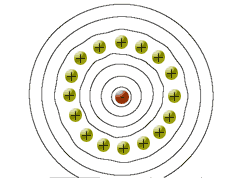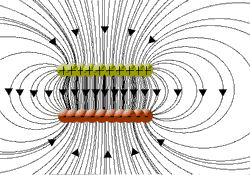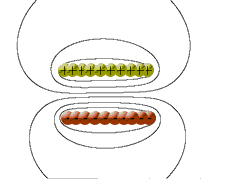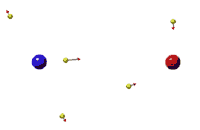
(The picture
above is a screen shot of the applet. Note that the "test" charges here are
negative! This is not the convention that most physicists use, but
you get the idea.)
2. Equipotential lines: Equipotential lines indicate the points in space where the potential is the same. Another words, these are all the points where it takes the same amount of energy to bring in a positive "test" charge in from far away. An important feature of equipotential lines is that they are perpendicular to electric field lines.
2. Equipotential lines: Equipotential lines indicate the points in space where the potential is the same. Another words, these are all the points where it takes the same amount of energy to bring in a positive "test" charge in from far away. An important feature of equipotential lines is that they are perpendicular to electric field lines.
